Resident Evil 2 Benchmarked
It'due south time for some other mega benchmark and the field of study of today'due south GPU onslaught is Resident Evil ii. A classic survival horror game developed and published by Capcom that it's too a remake of the original Resident Evil 2 released for the PlayStation way back in 1998.
The game has been built upon Capcom's RE Engine, which was originally built for Resident Evil 7: Biohazard, only has since been used for Devil May Weep 5 as well. Fun fact: the "RE" stands for the showtime two letters of the engine'southward total name, "Reach for the moon." Told y'all it was fun.
Before the RE Engine, Resident Evil titles used the MT Framework engine. This includes 2022's Resident Evil 6. The RE Engine is much improved and offers a diverseness of new graphical methods such as dynamic shadows, shadow cache, subsurface scatters and FXAA + TAA. The updated rendering techniques include HDR, a VR specific mode, the power to output 4K resolution, among others.
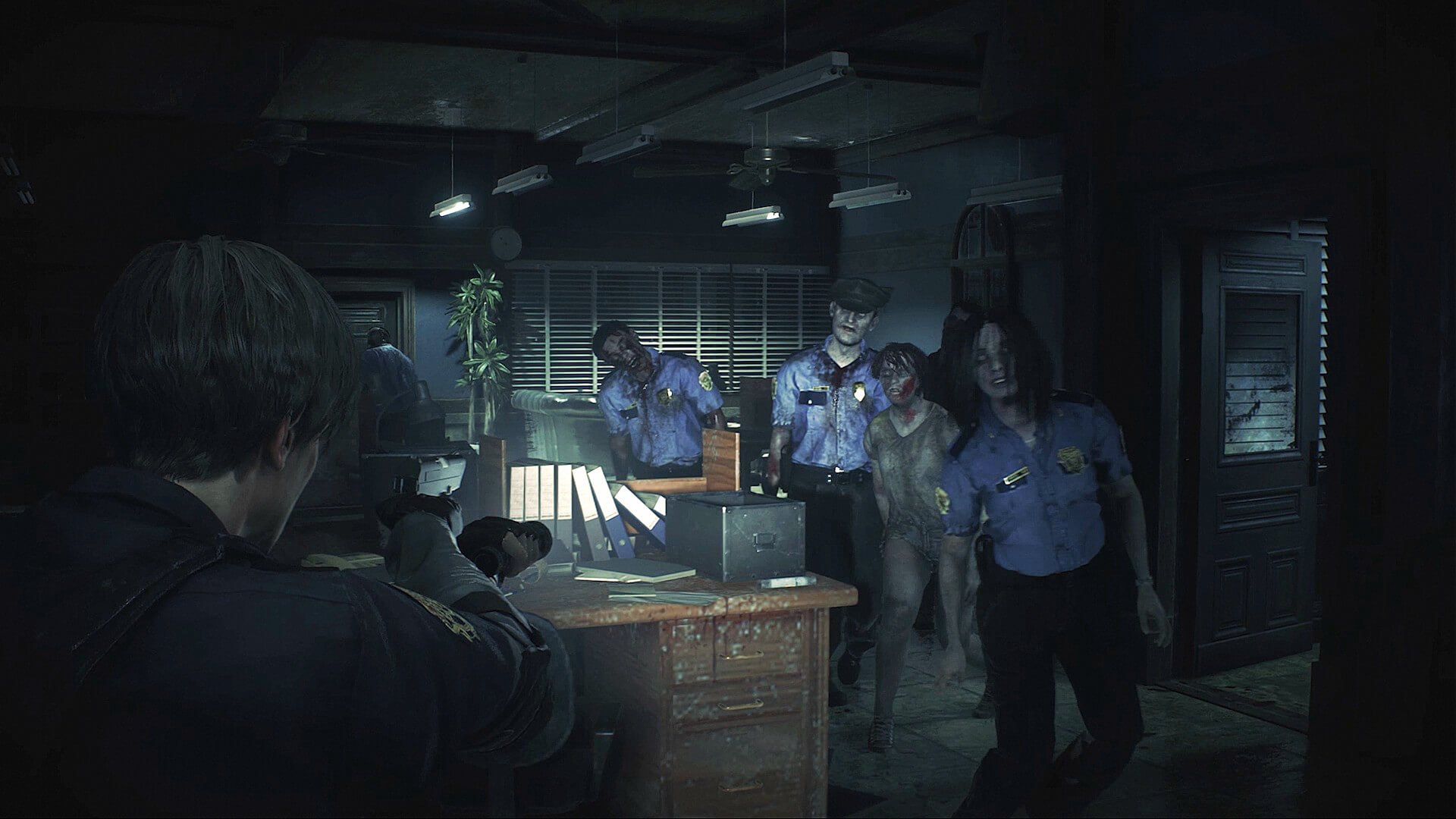
With those technical details out of the way, allow'due south get to it. We won't be reviewing the actual gameplay hither, only here's a handy review roundup on how it plays. What we will show you here is how a massive range of graphics cards perform in this title, so you know what you'll demand for playable performance at 1080p, 1440p and 4K using the max graphics quality preset. We'll too run boosted testing with a mid-range preset at 1080p to come across what you can become away with.
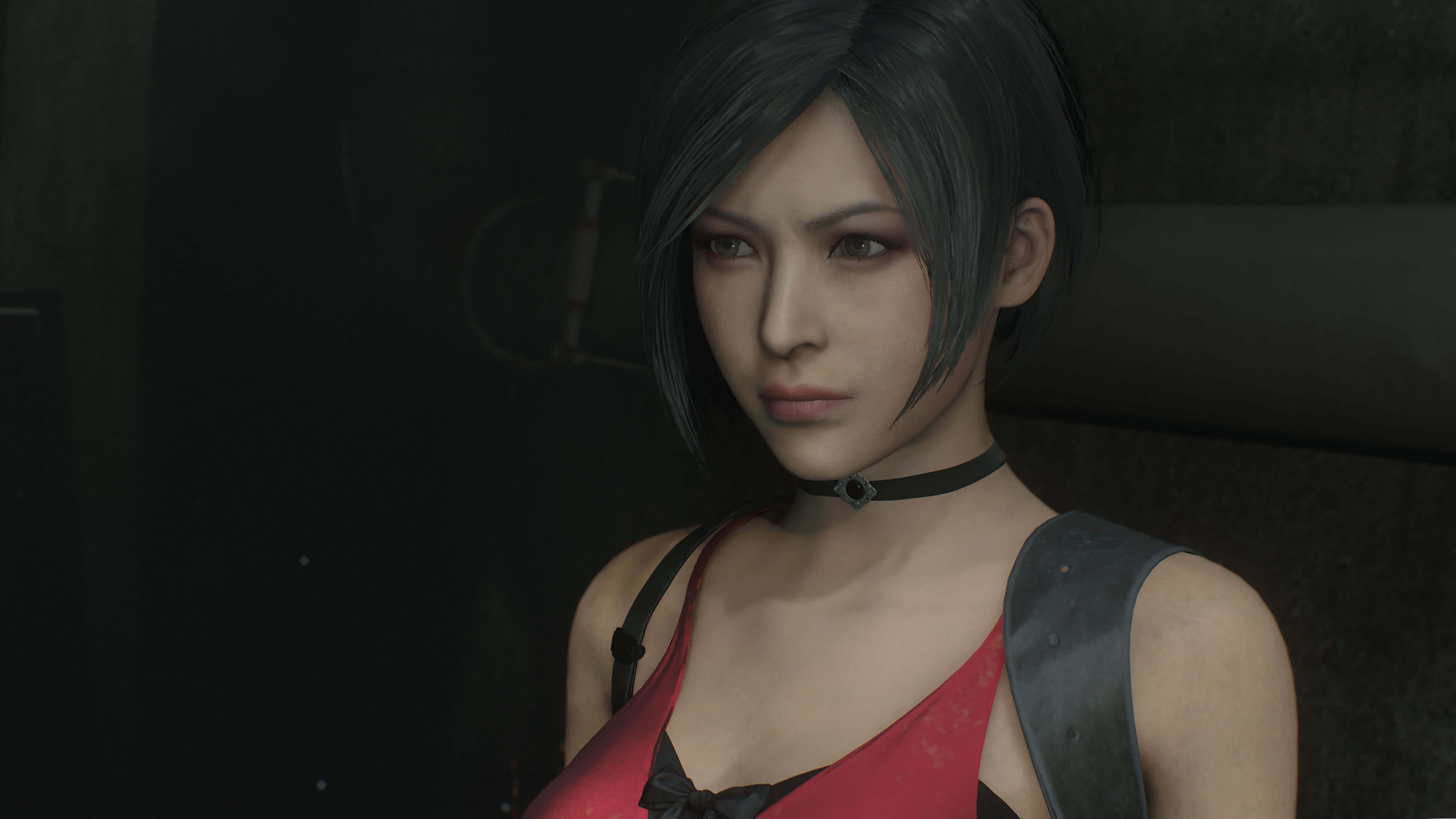
Resident Evil two supports both DirectX 11 and 12, nevertheless nosotros've used the older DX11 API for all the testing because as usual DX12 is a complete and utter mess, plagued by depression frame rates and constant stuttering. GeForce RTX cards along with AMD'southward Vega models were both over thirty% faster when using DX11.
For the test nosotros're recording a 60 second pass in the Police station. From the initial checkpoint nosotros walk up the left staircase, the dorsum down the opposite side and nether the roller door, the examination ends during a cutscene. For the majority of the testing the "Max" preset has been used which recommends 14 GBs of VRAM which is pretty insane and seems a tad exaggerated given the RTX 2080 Ti only saw an resource allotment peak of 8GBs when gaming at 4K. That's still very high relative to other titles, simply not shut to the suggested requirements.
When using the "Balanced" contour nosotros re-tested some of the newer graphics cards along with much older GPUs. This preset suggests VRAM usage to hit 2.4 GB which is much more manageable for the lower-stop cards. Every bit for drivers, we've tested with AMD's Adrenalin 2022 Edition xix.1.2 driver and Nvidia's GeForce Game Ready 417.71 driver...
Benchmarks
Starting with 1080p, hither we have all the current and previous generation GPUs. Technically we take iii generations from Nvidia now, but the point is nosotros have a lot of squashed blue bars and then let's stretch this out and discuss the results as we coil downwards to the dreaded unplayable zone.
Even with the maximum quality preset enabled the RTX 2080 Ti blitzed this test spitting out an incredible 217 fps on average with a ane% low of 181 fps and a 0.ane% low of 133 fps. The Pascal Titan Ten, GTX 1080 Ti and RTX 2080 all provided very like results, needless to say they enabled extremely playable performance.

And then we see a reasonably big step down to the RTX 2070 and Vega 64, at least when looking at the average frame rate. It should exist noted that Vega 56 does incredibly well, beating not only the GTX 1080 but besides the new RTX 2060. Information technology slippped backside ever so slightly for the 0.i% outcome, just was just ahead for the 1% low and average frame rate.
From this point on AMD does very well... The RX 590 was able to match the GTX 1070 and this placed it on par with the GTX 980 Ti. And so nosotros run into the RX 580 smashing the GTX 1060 6GB by a disarming 26% margin, placing them on a category apart in this championship.
AMD's previous-gen Fury range didn't fare besides, and this is down to that limited 4GB VRAM buffer, rendering them unplayable. It was interesting to see the 4GB versions of the RX 580 and 570 fairing much better though. Nosotros're putting this downwardly to memory optimizations for the GCN 4th gen architecture.
Moving down further, we meet the GTX 980, GTX 1060 6GB and Radeon R9 390 all producing similar operation at effectually 70 fps. Then to our surprise, the 3GB 1060 was able to provide playable performance, given its limited VRAM buffer size, and in particular given what we saw from the 4GB AMD cards. I was expecting a Powerpoint presentation hither only it was playable. Surely, the 0.one% depression performance suffered just the experience wasn't overly choppy. A similar experience was seen with the GTX 970 and once we drop below that the experience really started to suffer.

Increasing the resolution to 1440p sees quite a few GPU models fall below the 60 fps barrier. Many of the entry level GPUs were too boring to get here, so they've been dropped from the chart.
As expected the RTX 2080 Ti has no issue at 1440p and the same is true for the non-Ti model along with the GTX 1080 Ti and Titan Ten. It'south also interesting to note that the GTX 1080 Ti'due south slightly larger VRAM buffer didn't requite it an reward over the RTX 2080 despite the game allocating around vii - seven.5GB/s of retentivity at 1440p, basically placing the 2080 right on the edge here.
While the game was often allocating more than 6GB of video memory, the RTX 2060 had no issues keeping up and equally was the case at 1080p, remained only 11% slower than the RTX 2070 at 1440p.
AMD'due south Vega GPUs do very well once more. Vega 64 hung in in that location with the RTX 2070, while Vega 56 topped the GTX 1080 and RTX 2060, at least for the average frame rate. Frame time operation was slightly down, but nil too alarming.
The RX 590 was able to proceed pace with the GTX 1070 again, while the RX 580 was 26% faster than the GTX 1060 6GB. Older Fury GPUs continued to struggle due to its limited 4GB VRAM buffer, though GCN 4th gen models with only 4GB of memory fared better again.
The GTX 1060 6GB was right on the border for playable performance, while older Maxwell GPUs, the GTX 980 and 970 were unable to deliver playable performance at 1440p with visual settings maxed out.
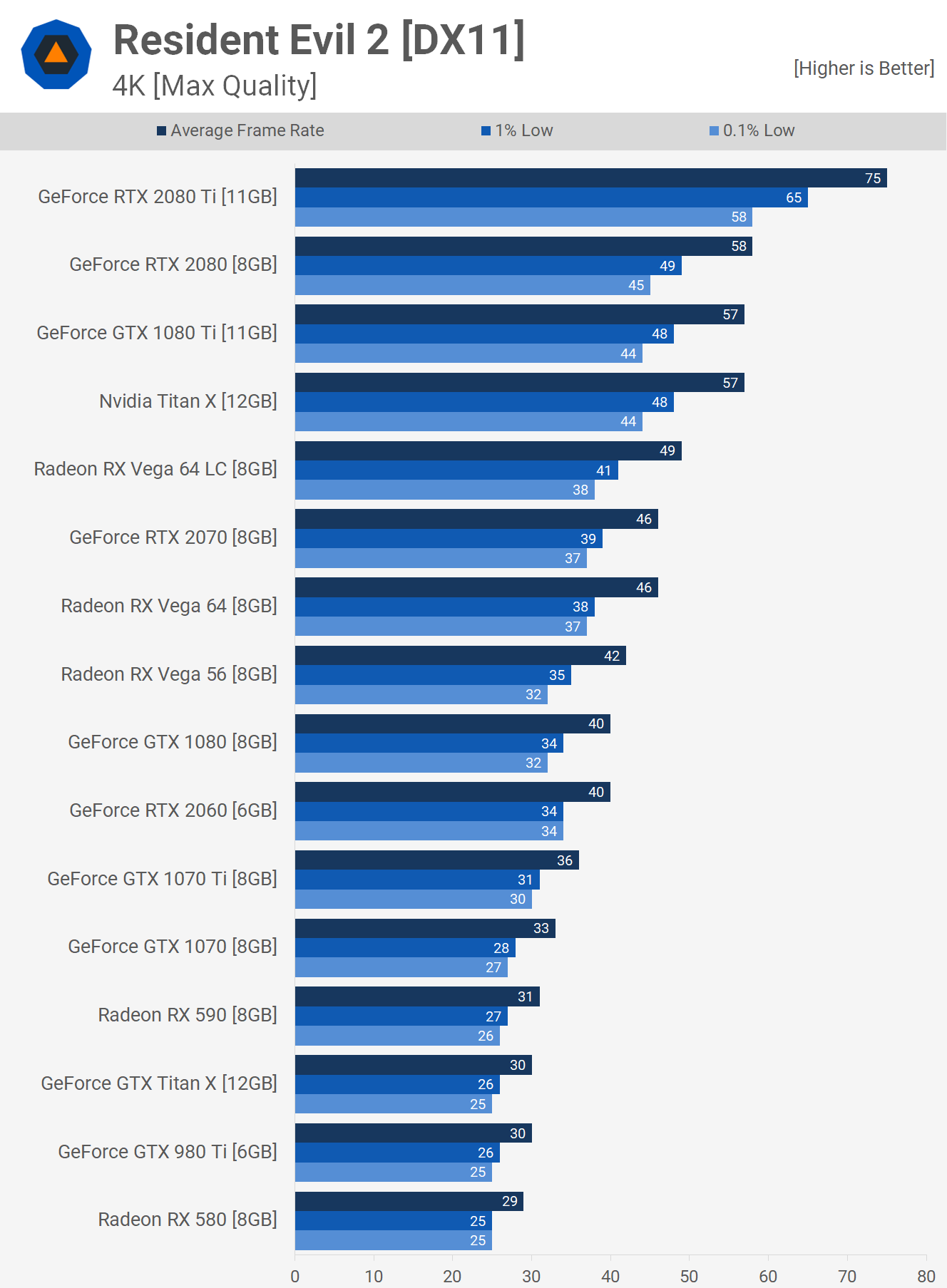
At 4K resolution nosotros have fewer survivors. The RTX 2080 Ti was capable of providing smooth playable operation. What we got from the RTX 2080, GTX 1080 Ti and Titan Ten was also very dainty. The RTX 2070 and Vega 64 weren't fast enough, though you could likely reduce a few settings and get them up to an acceptable level of functioning. Across that, you're better off gaming at 1440p.
Taking It Downwardly a Notch
Wrapping upwardly the testing, nosotros grabbed a few mid-range graphics cards likewise as some older bangers. Loaded up what'southward called the "Balanced" preset at 1080p and ran a few more tests. This boosted the performance of the Radeon RX 570 by almost xxx%.
The truly huge gains were seen with the 2GB and 3GB cards. The GTX 1050 for example saw over an 80% performance heave with the balanced preset.
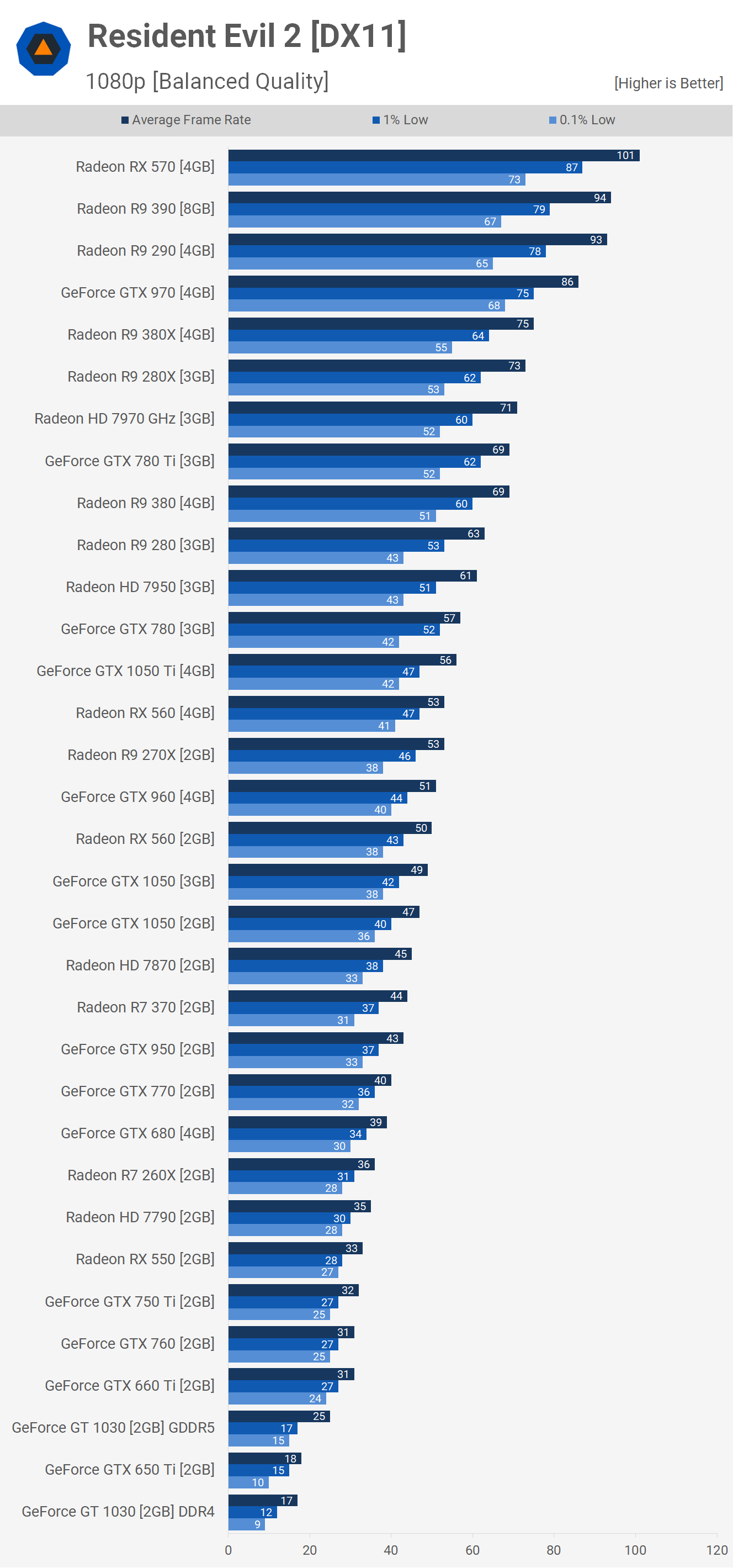
The counterbalanced preset suggests 2.four GB of VRAM will be used, though that seems like an aggressive gauge as the 2GB models worked just fine.
For 60 fps on average, something like the Radeon HD 7950 will do. From Nvidia you lot will require a GTX 780 Ti or GTX 970, and then the requirements are steeper with the older GeForce cards. Older models such as the R9 270X or GTX 960 did enable a playable feel at 1080p using this preset, and so not a bad bargain at that place really.
We noted bug with GeForce 600 & 700 serial cards, basically whatever models based on the Kepler architecture. We specifically say Kepler considering the GTX 750 Ti worked without issue and that's ane of the few GeForce 700 series model non to utilize that architecture, instead it's a Maxwell GPU. While the game did load upwards with a Kepler-based GPU, the game was very night and unplayable, which would suggest it's a driver-related issue with the game'southward lighting. Nosotros're sure if GeForce 600/700 owners make enough noise Nvidia will address the bug.
Wrap Upward
For those of you targeting 1080p gameplay with all the bells and whistles, you'll desire a graphics menu with at least 4GB of memory, though ideally 6GB+ is the way to go. From the newer GPUs you'll want at to the lowest degree a 6GB GTX 1060 or GTX 980 from Nvidia or an RX 570/R9 390 from AMD.
As it's often the instance, the RX 570 4GB represented infrequent value, simply for the max preset you will want to ensure yous go an 8GB version. And while you're already at that place perhaps just get an 8GB RX 580. The 8GB RX 580 was the pound for pound champ at 1080p.
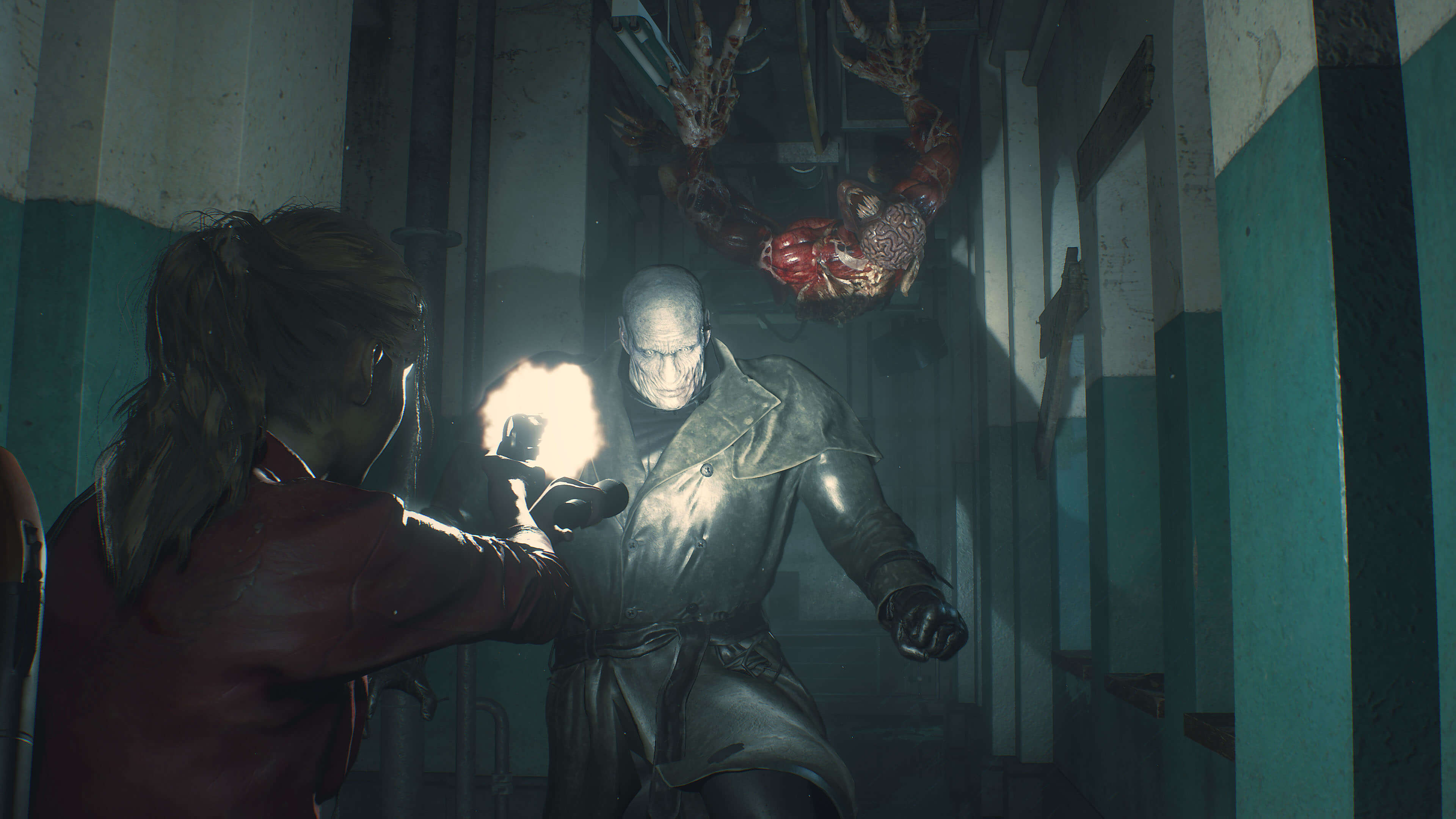
For those gaming at 1440p there are a few expert options. Vega 56 is certainly one of them, as is the new RTX 2060. That said if y'all've got a Pascal GTX 1070, 1070 Ti or 1080 then you'll have no problems playing Resident Evil two at 1440p.
Every bit for 4K, no surprises hither. Y'all'll ideally desire an RTX 2080 Ti, only if your non drowning in money then the GTX 1080 Ti or RTX 2080 will get the chore done. Of course, you lot can always tweak the quality settings for better functioning and tomorrow Tim will exist doing only that on a HUB video, and so that'll be worth checking out.
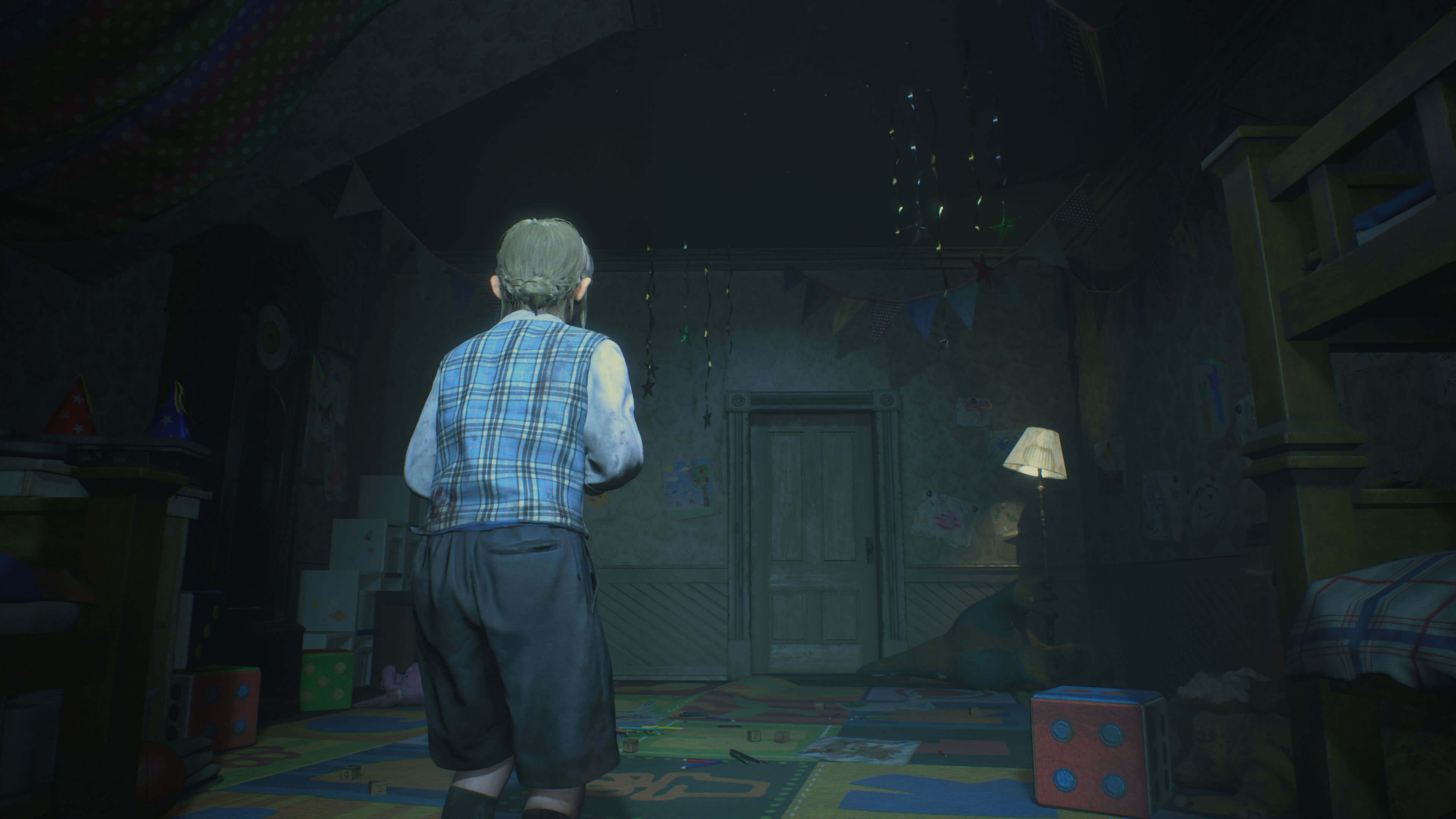
Resident Evil two looks bang-up. Tell y'all the truth, information technology looks quite amazing. If you're into survival horror games then I'm confident you'll enjoy information technology. Steam's user reviews are overwhelmingly positive, so information technology looks like nosotros take one of those rare titles that delivers. We'll exist adding this one to our full time roster of games that nosotros benchmark with and it even looks like it might be a decent CPU criterion as well, though we'll need to play it more than to see where the enervating sections are. If you enjoyed this feature, delight share it, and let u.s. know what time to come game releases you would like us to criterion.
Shopping Shortcuts:
- GeForce RTX 2060 on Amazon, Newegg
- GeForce RTX 2070 on Amazon, Newegg
- GeForce RTX 2080 on Amazon, Newegg
- GeForce RTX 2080 Ti on Amazon, Newegg
- Radeon RX 570 on Amazon, Newegg
- Radeon RX 580 on Amazon, Newegg
- GeForce GTX 1060 6GB on Amazon, Newegg
Source: https://www.techspot.com/review/1784-resident-evil-2-benchmarks/
Posted by: smithnalled.blogspot.com


0 Response to "Resident Evil 2 Benchmarked"
Post a Comment